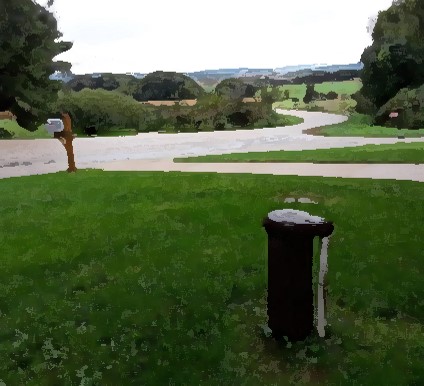Community Well-Water Trend Monitoring Networks
 Many communities have adequate
baseline data describing general well water quality and problem areas within their communities. However, communities are increasingly asking the question whether groundwater quality is getting better or worse over time. Most communities have not been collecting data in a way that allows them to effectively answer that question.
Many communities have adequate
baseline data describing general well water quality and problem areas within their communities. However, communities are increasingly asking the question whether groundwater quality is getting better or worse over time. Most communities have not been collecting data in a way that allows them to effectively answer that question.
Recently a number of counties have worked with the Center to develop citizen-based groundwater monitoring programs. These are 5-year programs designed to test the same wells over a set time period in order to collect data that can be useful in understanding well water quality fluctuations over time and space.
The well networks are designed to be representative of the diverse land-use, soils, and geologic regions within the county. Well owners recieve a sample kit and mail their well water sample back to the Center where it is analyzed at the state-certified Water and Environmental Analysis Lab for nitrate-nitrogen, chloride, pH, total hardness, alkalinity, and conductivity.
Data analysis evolves as more years of data are received. You can explore data from our community partners here (links to county project dashboard):
Is your community interested in a long-term citizen based groundwater monitoring program?
Prior to starting a citizen-based groundwater monitoring program, the following questions are often useful in deciding whether the tracking of groundwater quality trend data would be useful to decision-makers and resource management professionals:
- Do you feel like you have enough information about groundwater quality to effectively target management decisions?
- Do you understand how various land cover, soil characteristics, and/or geology affect groundwater quality with respect to nitrate and chloride?
- How does groundwater quality today compare to groundwater quality 10, 15, 30 years ago? Do you have this information, or if you had this information, would it be useful for you in making decisions today?
If these questions are relevant to your community, a county-wide groundwater quality monitoring program could, over time, provide information on where to invest time and money for the purposes of improving groundwater quality. In addition, a well-developed water quality monitoring program would provide an important metric by which the effectiveness of resource management decisions could be measured.
Baseline data is the first step in understanding overall well water quality across the county, however; little information exists that allows for an understanding of how groundwater quality has changed over time. Establishing a network of private well owners to perform annual testing over an extended period of time would help inform residents and local leaders whether groundwater quality is getting better, worse, or staying the same.
The answer to that question is that there are likely areas where each of those scenarios is occurring. To what extent each occurs in a region is largely unknown. Analysis of the nearby land use and well construction of private wells with long-term data could help identify what factors contribute to declining or improving groundwater quality. This information can inform future land use and well construction guidelines in participating communities.
In those areas where water quality is changing, additional investigation into land use practices could provide insight into what is causing those changes (both negative/increasing pollutants and positive/decreasing pollutants). What is learned from monitoring this network of wells can then be applied more generally to the area of interest.
For those interested in starting a community well water monitoring network in your county contact
Kevin Masarik.
